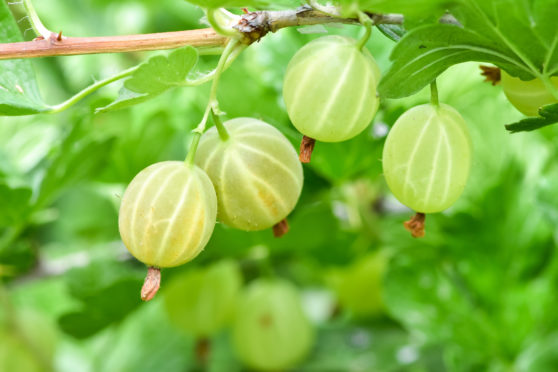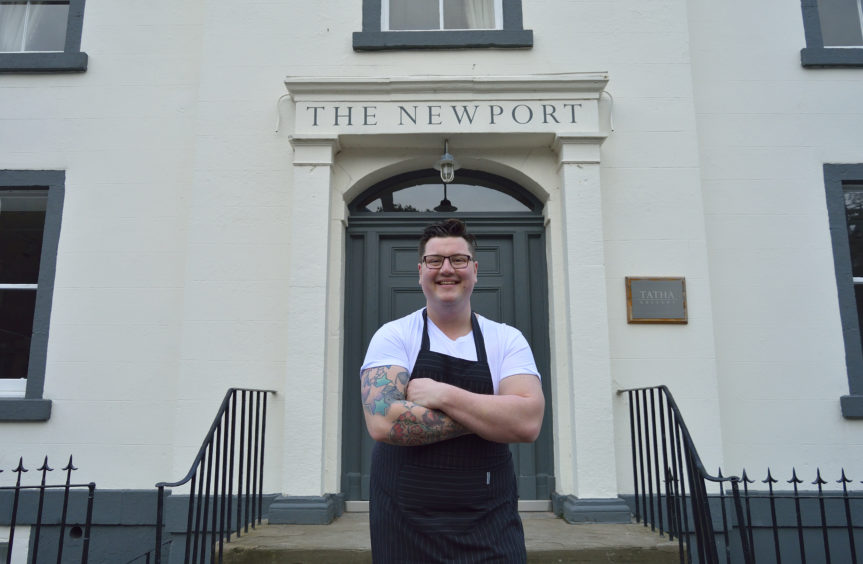Jamie Scott of The Newport tells us a bit more about gooseberries and how to cook sweet or savoury dishes with them
Berry season is upon us but I’m not talking strawberries, raspberries or even our famous Tayberries.
I am talking Ribes uva-risca, more commonly known as gooseberries. We are very close with Ewan at Pitormie farm who has up to 20 varieties of gooseberries each season.
The gooseberry is indigenous to many parts of Europe and western Asia, from France eastwards, well into the Himalayas and peninsular India.
In Britain they are often found in copses and hedge rows and about old ruins but the gooseberry has been cultivated for so long that it’s tricky to distinguish wild bushes from feral ones, or to determine where the gooseberry fits into the native flora of the island.
When I eat out in restaurants I very rarely see any gooseberries on menus, unless I am eating in higher end or top class restaurants. I hardly ever spot them in supermarkets either so if you do wish to use them you would have to go to a farmers market or farm shop in mid-summer.
Gooseberries come into season at a really nice time and they naturally go with other seasonal delights such as elderflower, mackerel, lamb and strawberries, to name but a few. On Sundays we make the berries into a light compote topped with some crumble (125g butter,125g sugar,200g plain flour), served with elderflower creme Anglaise – simply delicious. For a more savoury dish we cook them down with sherry vinegar and brown sugar served with some cod poached in brown butter and a seaweed butter sauce. The natural tartness of the gooseberry works well with the white meaty fish. As you know, I like to talk about preserving and fermentation and, like all most ingredients, gooseberries work really well, whether that be pickled or salted, or making a great flavouring for vodka or gin.
Chef’s tip: We have been analysing our waste a lot recently, especially vegetable scraps. They actually make the perfect vegetable stock, or nage, to give your soups and sauces a little more body and depth in flavour. Onion ends, carrot tops, celery trim and even parsley stems all make for a great stock. I also love using the bases from cauliflowers and broccoli. Just stay away from seeds and certain herbs as some can make it bitter. To make the stock, add enough water to cover the vegetable scraps, simmer the mixture for 45 minutes, stain and then reduce by half.Berry season is upon us but I’m not talking strawberries, raspberries or even our famous Tayberries.
I am talking Ribes uva-risca, more commonly known as gooseberries. We are very close with Ewan at Pitormie farm who has up to 20 varieties of gooseberries each season.
The gooseberry is indigenous to many parts of Europe and western Asia, from France eastwards, well into the Himalayas and peninsular India.
In Britain they are often found in copses and hedge rows and about old ruins but the gooseberry has been cultivated for so long that it’s tricky to distinguish wild bushes from feral ones, or to determine where the gooseberry fits into the native flora of the island.
When I eat out in restaurants I very rarely see any gooseberries on menus, unless I am eating in higher end or top class restaurants. I hardly ever spot them in supermarkets either so if you do wish to use them you would have to go to a farmers market or farm shop in mid-summer.
Gooseberries come into season at a really nice time and they naturally go with other seasonal delights such as elderflower, mackerel, lamb and strawberries, to name but a few. On Sundays we make the berries into a light compote topped with some crumble (125g butter,125g sugar,200g plain flour), served with elderflower creme Anglaise – simply delicious. For a more savoury dish we cook them down with sherry vinegar and brown sugar served with some cod poached in brown butter and a seaweed butter sauce. The natural tartness of the gooseberry works well with the white meaty fish. As you know, I like to talk about preserving and fermentation and, like all most ingredients, gooseberries work really well, whether that be pickled or salted, or making a great flavouring for vodka or gin.
Chef’s tip: We have been analysing our waste a lot recently, especially vegetable scraps. They actually make the perfect vegetable stock, or nage, to give your soups and sauces a little more body and depth in flavour. Onion ends, carrot tops, celery trim and even parsley stems all make for a great stock. I also love using the bases from cauliflowers and broccoli. Just stay away from seeds and certain herbs as some can make it bitter. To make the stock, add enough water to cover the vegetable scraps, simmer the mixture for 45 minutes, stain and then reduce by half.











